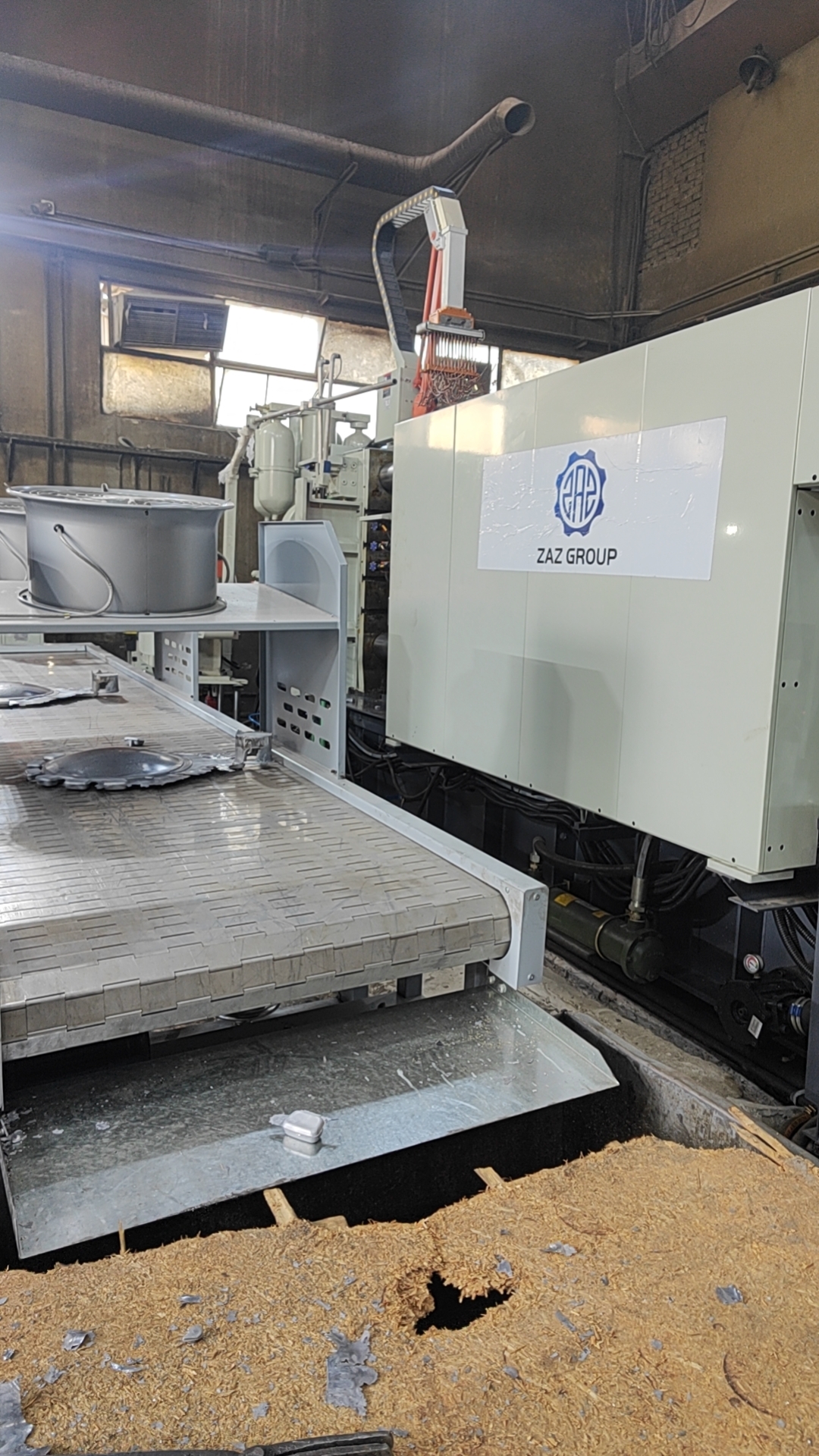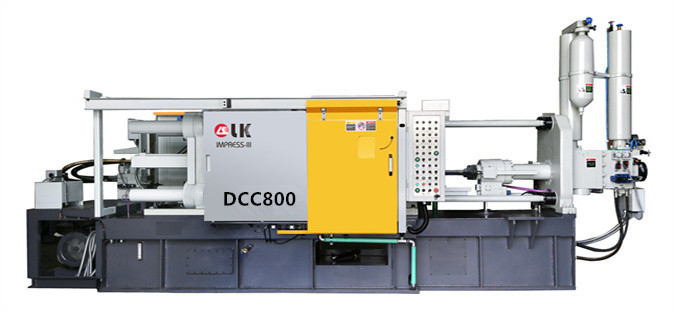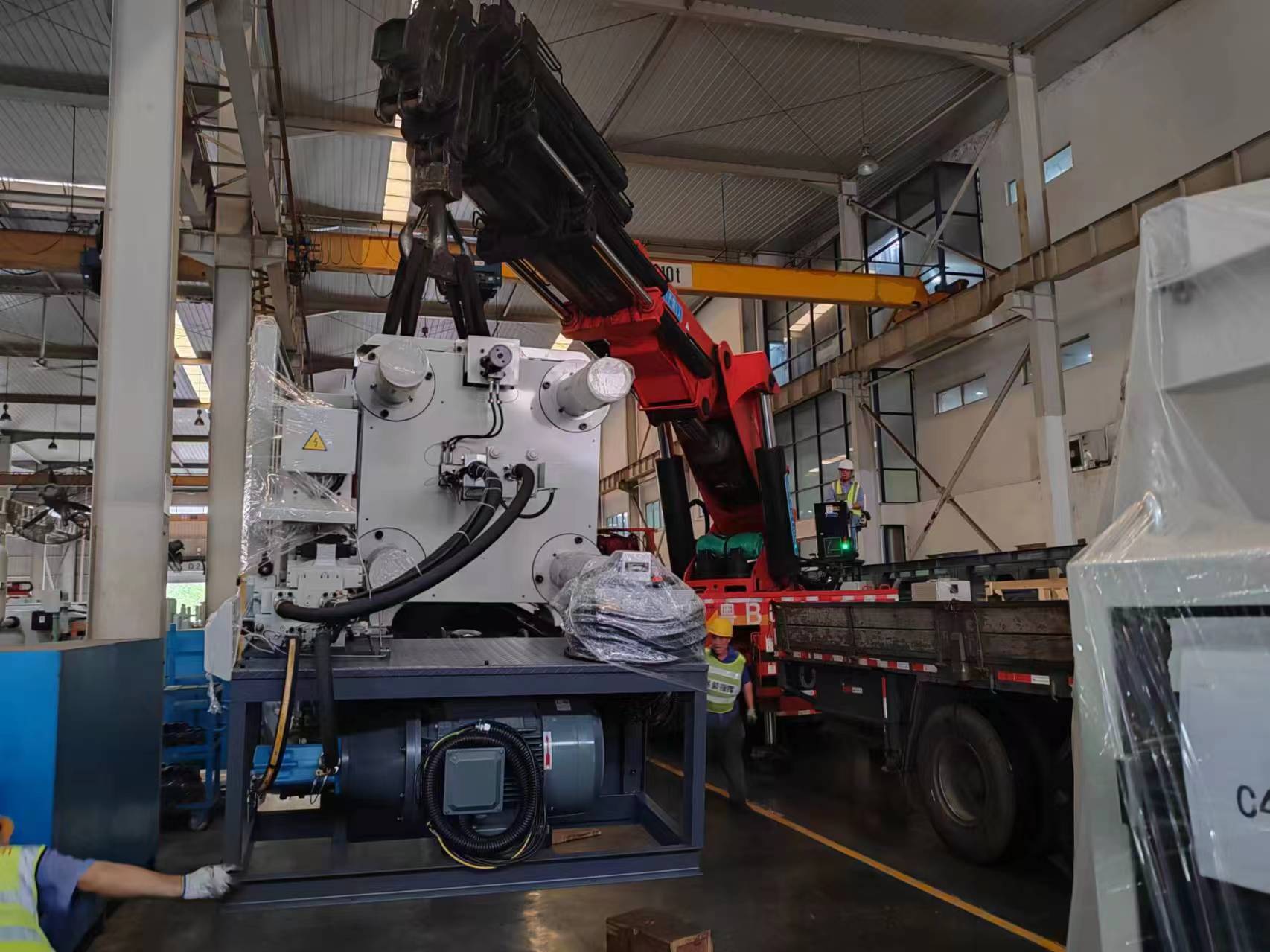Die Fillet
LK Die Casting Machine / 2024-08-28 11:47:46
2024-08-28 by Cherry
Mold design is the core of the manufacturing industry,
and die fillet, as an important part of it, plays
an indispensable role.
This article will explore the definition, function,
design principles and application of die fillet

Through a detailed explanation of this concept and
practical suggestions, it helps readers better understand
and apply to die fillet, thereby improving product quality
and production efficiency.
What is Die Fillet?
Die fillet refers to the smooth transition area at the
corner of the inner or outer contour of the mold.
Simply put, it is a circular connection part that
transitions from one plane or curved surface to another
plane or curved surface. The existence of die fillet
helps to reduce stress concentration and prevent cracks
or breakage of materials due to excessive stress during
processing or use.

The role of die fillet
Die fillet can improve the durability of the mold, ensure
the accuracy of the product, and simplify the manufacturing
process of the mold.
Reasonable fillet design can reduce the stress concentration
of the mold during the stamping process,
reduce the risk of mold damage, and make the gap of the mold
more uniform, improving the precision of the product.
Die fillet plays a vital role in mold design and manufacturing.

The following are several key functions of die fillet:
1. Reduce stress concentration: At the corners of the mold,
if there is no fillet, the material
will produce stress concentration when it is stressed.
This stress concentration is prone to fatigue failure of the
material and proper fillet design can effectively disperse
stress, reduce the stress concentration of the mold during
the stamping process, reduce the risk of mold damage, and
make the gap of the mold more uniform, improve the precision
of the product, and extend the service life of the mold.
Improve material fluidity: During the die-casting process,
liquid metal needs to fill the mold quickly.
The design of the die fillet can improve the fluidity of the
material, allowing the liquid metal to flow more smoothly
and avoid problems such as incomplete filling or bubbles.
Enhance mold strength: Mold fillet can effectively reduce
the fragility of mold edges and increase the overall mechanical
strength of the mold, especially when subjected to high-pressure
in the die-casting machine.
Die fillet can improve the durability of the mold, ensure the
accuracy of the product, and simplify the manufacturing process
of the mold.
Improve surface quality: Smooth transition not only helps to
improve the durability of the mold, but also improve the surface
quality of the final product, making the product's appearance
smoother and more beautiful.
Design principles of die fillet
The design of die fillets is a process that requires a comprehensive
consideration of multiple factors.
The following are some basic principles that should be followed
when designing die fillets:
1. Choice of fillet size: The radius of the fillet should be
determined according to the material, process requirements,
and use conditions of the mold.
Generally speaking, the larger the fillet radius,
the more conducive it is to reducing stress concentration,
but too large a fillet may also affect the accuracy and
function of the mold. Therefore, a reasonable fillet size is crucial.
2. Uniform transition: The fillet should be consistent with
other geometric features of the mold to ensure a uniform
and smooth transition.
This not only helps to improve material fluidity but also
avoids unnecessary defects in the production process.
3. Consider the mold processing method: When designing the mold radius,
the mold processing method should also be considered.
Different processing processes have different requirements
for radius. For example, casting, forging, or cutting processing
may have different restrictions on radius design.
Avoid sharp corners and acute corners: In-mold design, sharp
corners and acute corners should be avoided as much as possible,
because these parts are prone to stress concentration and cracks,
reducing the service life of the mold.
4. The relationship between mold radius and die-casting machine
In the application of die-casting machine, the design of the mold
radius is particularly important.
Die-casting is a molding method that injects liquid metal
into the mold under high pressure.
This process requires the mold to have extremely high precision
and durability. The mold radius plays the following key
roles in this process:
1. Optimize material flow: During the die-casting process,
liquid metal fills the mold at a very fast speed.
Reasonable design of mold radius can avoid eddy currents
or dead corners during material flow, thereby ensuring
that all parts of the mold can be evenly filled and
reduce defects in castings.
2. Improve product quality: Mold radius helps reduce stress
concentration inside the casting, thereby reducing
the incidence of product deformation, cracks, and
other defects.
This is essential to ensure the high quality of die-cast products.
3. Extend mold life: Since the die-casting machine generates
extremely high pressure when working, the durability
of the mold becomes a key issue.
Mold radius can reduce stress concentration, reduce mold
wear and fatigue under high pressure, and extend the
service life of the mold.
Challenges in design and manufacturing
Although mold radius design sounds simple in theory, it
faces many challenges in the actual design and manufacturing
process.
The design of the mold radius needs to be weighed and decided
according to the specific situation. For example, when designing
thick-walled products, maintaining the consistency of mold
radius helps to achieve a uniform distribution of wall thickness.
However, too many mold radiuses will increase the complexity
and cost of mold processing. :
1. Precision control: The design of the mold radius requires
extremely high precision and a slight deviation may affect
the overall function of the mold and product quality.
2. Material limitations: Different materials have different
characteristics. When designing mold fillets, it is necessary
to fully consider the machinability and durability of the material.
3. Process complexity: The processing of mold fillets usually
requires complex processes,
such as CNC processing, electrical discharge processing, etc.,
which increases the difficulty and cost of manufacturing.
Multi-process collaboration: The design and manufacturing of die
fillets require the coordination of multiple processes.
From design, and simulation to actual processing, each step is
crucial.
Actual case analysis
In order to better understand the role of mold fillets, we can
analyze an actual die-casting mold design case.
In this case, an automotive parts manufacturer needs to design
a complex die-casting mold for the production of high-precision
engine parts.
In the initial design, due to the failure to fully consider
the role of die fillets, the mold frequently cracked and worn
during use, and the product qualification rate was also low.
After the redesign, engineers optimized the fillet of the mold,
increased the fillet radius at key corners, and adopted a more
suitable processing technology.
In the end, the service life of the mold was greatly extended
and the product quality was significantly improved.
Future Development Trends
With the continuous advancement of manufacturing technology,
the design and application of die fillets are also developing.
In the future, with the popularization of intelligent manufacturing
and digital design, the design of mold fillets will be more accurate
and intelligent.
Through advanced simulation software and optimization algorithms,
engineers can predict and solve potential problems in the design
stage, thereby further improving the performance of the mold
and product quality.
In addition, with the continuous emergence of new materials,
the design of die fillets will face more challenges and
opportunities.
Future mold design will pay more attention
to the sustainability and environmental friendliness of materials,
and fillet design will also be more in line with the requirements
of green manufacturing.
Conclusion
Die fillets are an indispensable part of mold design.
Its reasonable design can not only improve product quality
but also extend mold life and reduce production costs.
In the application of die-casting machines, the role of die fillets
is particularly important. By deeply understanding the principles
and design principles of die fillets, we can better cope with
various challenges in manufacturing and promoting the sustainable
development of the manufacturing industry.
In short, whether in the application of die-casting machines or
other mold design fields, the design of diefillets requires
a high degree of professional knowledge and practical experience.
Hopefully, this article will help readers better understand
this key concept and apply it in their actual work, leading
to a more efficient and higher-quality manufacturing process.
For more info, you can refer to:
https://www.tiktok.com/@lk_diecastingmachine/video/7405113006880820522
https://www.youtube.com/shorts/JLX410QV_kw
To learn further info about Die Casting Machines,
pls contact LK Die Casting Machine Authorized Official Agent
LK OFFICIAL AGENT OFFICE DCM
LK Die Casting Machine Authorized Official Agent for Egypt(EGY)
Saudi Arabia(ksa)
United Arab Emirates(UAE)
The Islamic Republic of Iran(Iran)
Qatar(QAT)
The State of Kuwait(Kuwait)
The Middle East
Address: 1. Industry Zone, South of Port Said Kebly, Cairo, Egypt
2. EX 14., EASTERN RING ROAD, AI RAYAN DISTRICT,
RIYADH, SAUDI ARABIA
Arabic Website: https://ae.zazdiecasting.com/
English Website: https://www.zazdiecasting.com/
Phone/WhatsApp/Wechat: 0086 13598704163
Mobile: +20 101 304 3317 +20 150 181 8310
Email: jack@zazmae.com ahmedmahmoud@zazmae.com
OTHER CONTENT
-

2024-09-19 14:16:15 LK Cold Chamber Die Casting Machine DCC900 Locking Force: 9000KN Die Height: 400-1000mm Space Between Tie Bars: 930x930mm Shot Weight: 13.5Kg Casting Area Max:2250c㎡
More -

2024-09-19 14:11:06 LK Cold Chamber Die Casting Machine DCC280 Locking Force: 2800KN Die Height: 250-650mm Space Between Tie Bars: 560x560mm Shot Weight: 2.9Kg Casting Area Max:700c㎡
More -

2024-09-19 10:23:07 LK Cold Chamber Die Casting Machine DCC580 Locking Force: 5000KN Die Heigh: 350-850mm Space Between Tie Bars: 760x760mm Shot Weight: 6.9Kg Casting Area Max:1250c㎡
More -

2024-09-19 10:11:20 LK Cold Chamber Die Casting Machine DCC400 Locking Force: 4000KN Die Height: 300-700mm Space Between Tie Bars: 669x669mm Shot Weight: 4.7Kg Casting Area Max:1000c㎡
More

